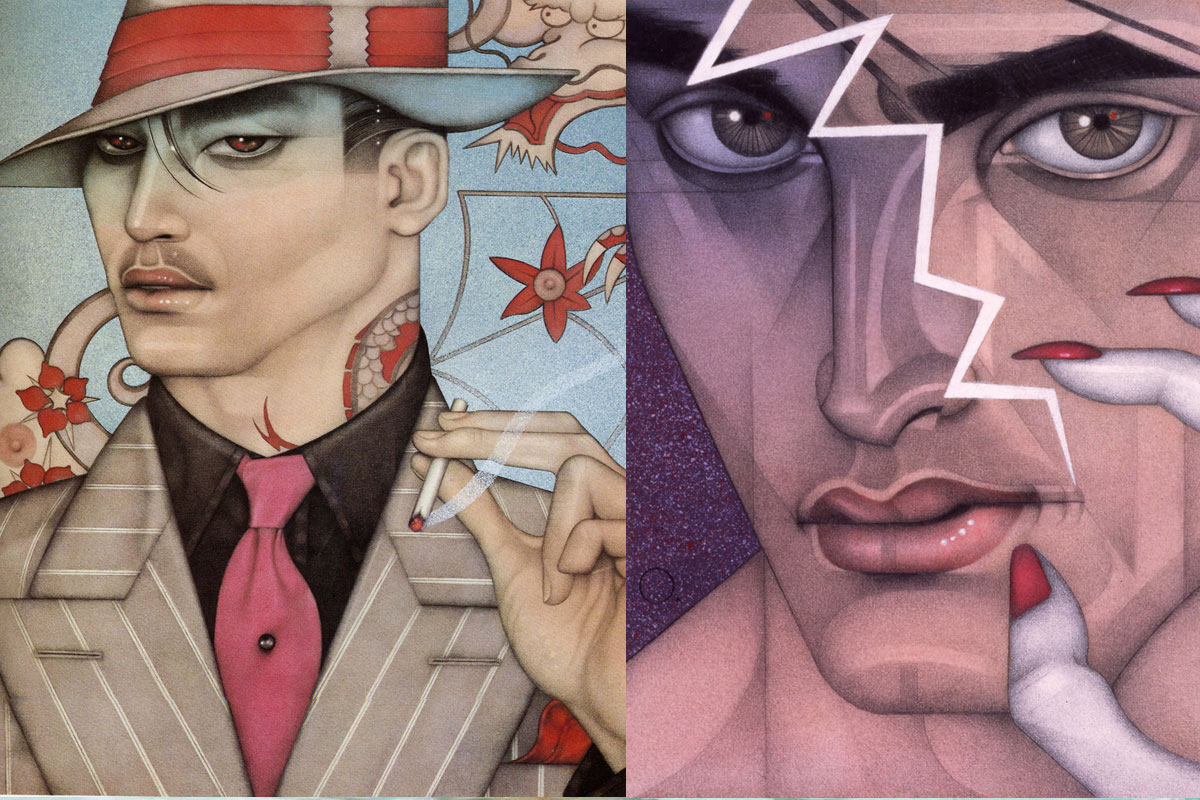The faces are unforgettable: their glances indelible and mesmerizing, they are imbued with mystery and eroticism as they engage the viewer who is captivated by their haunting, though clement airs. And their eyes, especially, seem the vortex where emotions are identified and revealed. These faces of singular beauty each hold stories inside. They are the faces that graced innumerable pages of magazines such as Time, Omni, and Playboy. They graced the covers of novels and posters in New York at a time when the city needed such beauty to gaze upon, and gladly did. They remain inordinately hypnotic today and remain a remarkable body of work of the artist Mel Odom.

Charleston 1985

Screen 1978

Birthmark 1980

The Bars Inside 1989

Yakuza 1984


Heart Attack 1986

Hard Stuff Approx. 1985

Nocturnes 1987


Orchid Eyes 1996

The Stallion 1996

RSVP 1995

Tree of Man 1983

Yakuza Pistol 1993
About the author:
Melvyn Lee Odom was born in Richmond, Virginia, and grew up in the tiny tobacco town of Ahoskie, North Carolina. Mel discovered his passion for art at the age of three. By the age of seven, Mel had convinced his indulgent parents to send him to his first drawing classes with a local artist.
In 1972, Mel completed his Bachelor’s Degree in Fine Arts in Fashion Illustration from Virginia Commonwealth University. Following graduation, Mel studied in the graphics department of Leeds Polytechnic Institute in England for a school year, before moving to London in time for the whole glam-rock thing. Upon returning to the United States and Richmond, Virginia, Mel worked on an illustration portfolio, in anticipation for his move to New York, New York, in 1975. Mel’s work appeared in a wide variety of magazines, such as Time, Omni, New York Times magazine, Rolling Stone, and Blue Boy. But Mel’s favorite work was his regular contributions to Playboy. His illustrations earned him multiple awards from The Society of Illustrators and other graphics and illustration organizations.

Golden Idol 1978
Mel’s style spread internationally through book covers for major publishers, a line of Paper Moon cards and posters that ultimately triggered the publishing of his first book, First Eyes, in Japan in 1982. Two years later, a re-edited book of his work, Dreamer was published by Viking-Penguin, featuring a forward by Edmund White. Mel also worked on art projects, including limited edition lithographs for publisher Eleanor Ettinger and more tellingly, three-dimensional masks.
In 1991 Mel channeled his passion for dolls into his own design, Gene Marshall, a sultry movie star doll from the film noir 1940s era. After several years of private development, Gene Marshall was licensed and manufactured by Ashton-Drake Galleries and introduced at the 1995 Toy Fair. Gene was an immediate sensation in the doll world, and within months was second only to Barbie in the burgeoning on-line chat rooms for fashion doll collectors. She was voted by collectors the most important doll since Barbie.

Colmar 1982
In 1999, Hyperion Press commissioned Mel to write and illustrate Gene Marshall’s biography. Gene Marshall, Girl Star was published in 2000 and established Gene as a bona fide three-dimensional character, complete with family tragedy and a believable classic Hollywood bitch rival, Madra Lord. Miss Lord became the second doll in a line that eventually grew to include seven characters. In 2006, the license for Gene was transferred into the capable hands of Integrity Toys where Gene flourished until 2010. Upon Gene’s 15th year in the doll market she “retired” in order to allow Mel the time to focus on other projects.
Also in 2006, Mel renewed his work with Secrets Garden, a series of human-scaled oil portraits of mostly Civil War era dolls, refocusing his interest from the business of dolls back to their esthetics. These paintings are his first two-dimensional work not related to Miss Marshall since the mid-1990s, reflecting his lifelong interest in the mystique of objects that look like life, yet are not.
Visit the official website of Mel Odom here.

















